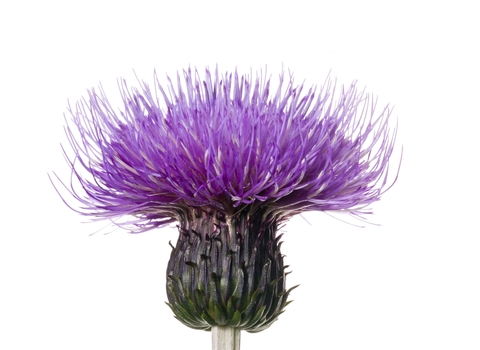
©Niall Benvie/2020VISION
Melancholy thistle
As its name suggests, the Melancholy thistle was once used to treat 'melancholia' (depression). Today, it can be found in upland hay meadows showing off its single, purple, thistle-like flower head.
Scientific name
Cirsium heterophyllumWhen to see
July to AugustTop facts
Category
Stats
Height: 0.5-1.2mProtected in Northern Ireland under the Wildlife Order, 1985.
